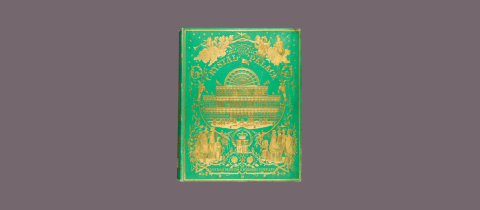There were no video games. There was no Internet. TV had not yet been invented. So in the early 1900s, British children played “conkers.” This is perhaps best described as an early form of “Survivor.” The winner was the player whose conker survived the longest in battles with other conkers. So what was a conker? A horse chestnuts tied to a string which could be swung around and smashed into an opponent’s chestnut. Competitions were fierce and winning nuts highly prized. Apparently, though, some resourceful players didn’t play cricket. They cheated. Chemically! Some genius discovered that immersing a chestnut in acetic acid disrupts its cell structure and causes its water content to be released. This water can be removed by dropping the nut in ethanol which is especially adept at taking up water, as any drinker with a parched mouth will testify. Finally, treatment with formaldehyde was found to harden and preserve the conker. Then, just as interest in this intriguing form of chemical research was increasing, the government stepped in. It wanted the conkers for its own war effort! No, the Germans were not going to be barraged with conkers. Well, not directly, anyway.
The enlisting of horse chestnuts for duty started in 1917 when the Director of Propellant Supplies sent letters to British schools asking students to gather horse chestnuts to help win the war. This was a puzzling request, to be sure. And we need a bit of background to solve the puzzle. At the time, the main propellant used by the British army was a substance called cordite which had replaced old-fashioned black powder. Unlike black powder, cordite burned without any smoke and allowed machine gunners to see their targets clearly and snipers to fire without giving away their position. “Ballistite,” an early version of a smokeless propellant, had been made way back in 1888 by Alfred Nobel who had mixed gun cotton (nitrocellulose) with nitroglycerin. Cordite was an improved version, made by adding Vaseline and acetone to the mix and then pressing the gelatinized slurry that was formed through dies into the form of cords. The Vaseline supposedly helped lubricate the gun barrels and the acetone functioned as a solvent allowing the components to be intimately mixed and extruded through the holes in the die. As the mix emerged, the acetone evaporated, and left behind long strings of “cordite.”
In Britain, the manufacture of cordite had commenced in 1889 at the royal gunpowder factory at Waltham Abbey. Acetone, which was critical to the process, was made from the distillate collected after heating wood to a high temperature. The best wood for this purpose came from the forests of Europe and was not available to the British after the start of World War I. But in 1915, a chance meeting solved this problem. David Lloyd George, the Minister of Munitions at the time, was introduced to Chaim Weizmann by C.P. Scott, the editor of the Manchester Guardian.
Weizmann was a Russian born chemist who had studied in Germany and Switzerland before coming to England for a post at the University of Manchester. At the time of his meeting with Lloyd George, Weizmann was involved in research aimed at making synthetic rubber because England feared being cut off from its rubber supplies in South America by the Germans. Chemical analysis of rubber suggested that it could be made from a compound called isoprene. Weizmann pursued this project fruitlessly until fate intervened. In Switzerland he had been engaged to be married, but the wedding never materialized because Weizmann had taken up with a young medical student, Vera Khatzmann. After establishing himself in Manchester, Weizmann brought Vera over to England and married her. As luck would have it, Vera's sister was married to a French scientist who worked at the Pasteur Institute in Paris. Weizmann happened to visit his brother-in-law one day and got a chance to look around the Institute. He discovered something remarkable. French scientists were using bacteria to convert various carbohydrate mixtures to simple chemicals through the process of fermentation. Weizmann now wondered whether some specific bacterium might produce his elusive quarry, isoprene, which could then be used to make rubber.
It was a good idea, but it didn’t work. No microbe that Weizmann tried produced isoprene. But Clostridium acetobutylium did convert starch into a mixture of ethanol, acetone and butanol, a mix that did not particularly interest Weizmann. But it certainly did interest Lloyd George, who heard the whole account from Weizmann himself. Here perhaps was a way to produce the acetone that was so sorely needed for the manufacture of cordite. Weizmann was asked to scale up his experimental process and within a short time had converted a gin distillery to the production of his mixture. The acetone was readily separated by distillation and soon mass production was under way. There was no need for butanol and huge stocks built up. But after the war the automobile industry, which was growing by leaps and bounds, needed a solvent for car paint. Butanol turned out to be ideal!
The most readily available raw material for the fermentation needed to produce acetone turned out to be corn mash. When British supplies were inadequate, mash was imported from Canada. But the threat of German U-boats necessitated an alternate source of raw material that could be found in Britain. That’s when horse chestnuts entered the picture. They were plentiful in Britain and were a good source of starch. They just had to be collected. So the word went out asking school children to rise to the challenge. A plant for converting horse chestnuts to acetone was set up in King’s Lynn in Norfolk, although at the time its location was secret. Schools were asked to send the chestnuts to government offices in London from where they were to be shipped to the plant. The collection system did not work well and rotting chestnuts piled up at many a railway station. Still, whether from corn mash or chestnuts, enough acetone was produced to meet the Allies’ demands.
The acetone was shipped to the Gretna explosives factory in located in Scotland, outside of German bomber range. It was here that the nitrocellulose and nitroglycerin were manufactured. It was a dangerous business! Hair pins and needles were forbidden in the plant and rubber shoes had to be worn to guard against sparks. The guncotton and nitroglycerin were mixed by hand to make “the devil's porridge.” Sulfuric acid and nitric acid fumes permeated the air and the workers, mostly women, were speckled with burns from acid splashes. But they produced one thousand tons of cordite per week! Their efforts were commemorated in a popular song which included the lyrics: "Give honour to the Gretna girls, Give honour where honour is due, don't forget the Gretna girls who are doing their duty for you.”
Lloyd George didn’t forget the Gretna girls nor Weizmann’s contribution. When he became prime minister he asked Weizmann how he would like to be rewarded. Dr. Weizmann was an avowed Zionist and asked for British help in establishing a homeland for his people. Britain complied with the Balfour Declaration of 1917, that established British support for a national homeland for the Jewish people. And that is how acetone came to play a large role in forming world history. Think of that next time you use it to remove finger nail polish!







